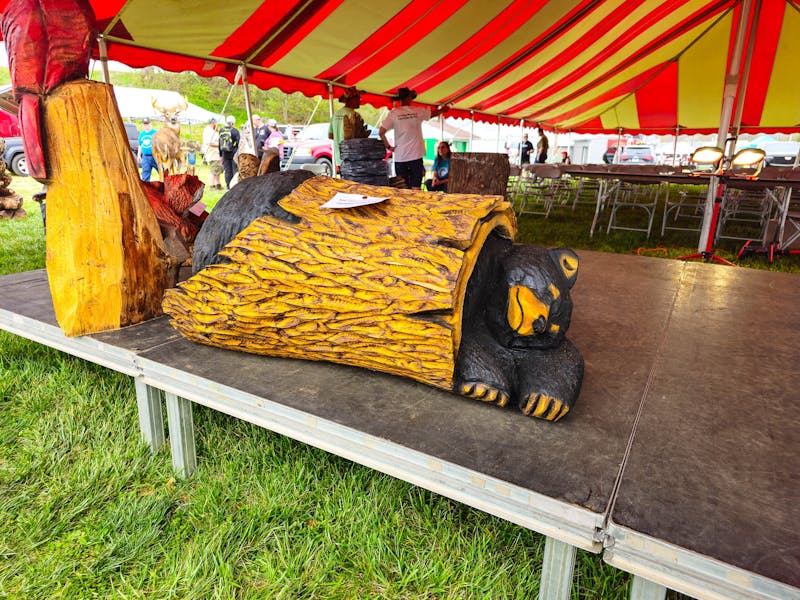The South Mountain Partnership finished off its 2015 speakers series at Shippensburg University on Thursday with “Living on the Wind: Tracking Northern Saw-Whet Owls Migrating Along South Mountain.”
Award-winning author and natural historian Scott Weidensaul presented research on North America’s smallest owl, the saw-whet owl, to SU students and the local community in Memorial Auditorium.
The night began with short presentations by Katie Hess, director of South Mountain Partnership; Cindy Adams Dunn, secretary of Pennsylvania’s Department of Conservation and Natural Resources; and Nathan Thomas, associate professor of biology at SU.
The presenters had the same message — conserving the environment.
“By being here tonight you are a part of [the conservation legacy],” Dunn said.
The South Mountain Partnership includes parts of Adams, Cumberland, Franklin and York counties. The speakers series is a revival of the History of Michaux Lectures, which serves to educate and engage the public on conservation topics.
Weidensaul has been studying the saw-whet owl for 19 years and his research has been working with 18 banders and a crew of 85 volunteers who put in about 6,000 hours annually. The research occurs at three stations that are part of a larger network called Project Owlnet.
“I’m a volunteer,” Weidensaul said. ”We all do this because we love it.”
Weidensaul presented information on the owls and their migration, but also on the process of banding and tracking the animals with technology. While conducting the research, Weidensaul and his team have about 800 to 1,000 attendees a year come receive education on the process and the owls.
Weidensaul said the main purpose of catching the birds is to band them, which means wrapping a lightweight metal band with a digital serial number on the owl’s leg.
“We mark them as an individual,” Weidensaul said. “We can tell not just where it migrates but how long it lives.”
The team also looks at replacement patterns in the feathers that glow under a black light, and colors of the eyes to determine the age of the owls. Weidensaul described the creatures as small as a soda can.
“Over the years we have employed more technology to understand the ecology of saw-whet owls,” Weidensaul said.
According to Weidensaul, these birds are like a gateway drug to conservation because they are cute, intriguing birds that can get people interested.
“The work South Mountain is doing is incredibly important: Working on preserving and creating solutions to problems,” Weidensaul said.
For more information on The South Mountain Partnership, visit southmountainpartnership.org.




The Slate welcomes thoughtful discussion on all of our stories, but please keep comments civil and on-topic. Read our full guidelines here.